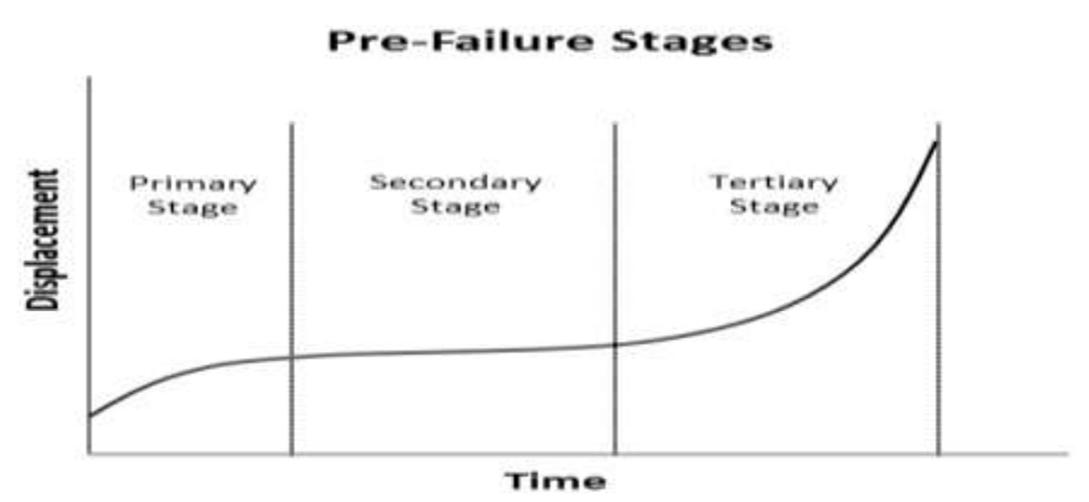
2 minute read
International Journal for Research in Applied Science & Engineering Technology (IJRASET)
from Predicting Stability of Slope by Amplitude and Coherence Using a Naïve Bayes Classifier
by IJRASET

ISSN: 2321-9653; IC Value: 45.98; SJ Impact Factor: 7.538
Advertisement
Volume 11 Issue III Mar 2023- Available at www.ijraset.com
Raincanaccelerateslopedeformationandsometimeseven causesslopefailureandcontinuous rainfall can decrease the stability of the slope and increase the risk of failure. However, the exact amount of water that led to slope failure remains unknown and Slope failures occurred when a phreatic surfaceappeared on theslopeface(Chen etal. 2009;Toll 2001). Theresults ofthis study show that continuous rain not only affects slope deformation but also it affects the coherence and amplitude directly. Although this study has not introduced a specific range for rain accumulation that guarantees slope failure, the data shows that continous precipitation over several days (usually more than 3 days) causes the slope to enter the progressive zone with high probability. Fig 7. Shows the primary stages of pre-failure evaluations where thetertiarystage is indicative of a rapid increase in the strain rate and leads to failure (Cho et al. 2021; Upasna and Moe 2018). The progressive zoneis in thetertiarystage in this figure.
Fig. 7. Primary stages of pre-failure evolution (Upasna and Moe 2018)
References
[1] Ahmad, F., Tang, X.-W., Qiu, J.-N., Wróblewski, P., Ahmad, M., and Jamil, I. (2022). “Predic-tion of slope stability using tree augmented naive-bayes classifier: Modeling and performance evaluation.”Math. Biosci. Eng,19,4526–4546.
[2] Arciniegas, G. A., Bijker, W., Kerle, N., and Tolpekin, V. A. (2007). “Coherence-and amplitude- based analysis of seismogenic damage in bam, iran, using envisatasar data.”IEEETransactions onGeoscienceandRemoteSensing,45(6),1571–1581.
[3] Bhargavi, P. and Jyothi, S. (2009). “Applying naive bayes data mining technique for classification of agricultural land soils.” International journal of computer scienceandnetworksecurity,9(8), 117–122.
[4] Carlà, T., Intrieri, E., Di Traglia, F., Nolesini, T., Gigli, G., and Casagli, N. (2017). “Guidelines on the use of inverse velocity method as a tool for setting alarm thresholdsandforecastinglandslides andstructurecollapses.”Landslides,14(2),517–534.
[5] Chen, R., Chen, H., Chen, K., and Zhung, H. (2009). “Simulation of a slope failure induced byrainfall infiltration.” Environmental Geology, 58(5), 943–952.
[6] Cho, M. T. T., Chueasamat, A., Hori, T., Saito, H., and Kohgo, Y. (2021). “Effectiveness of filter gabions against slope failure due to heavy rainfall.” Soils and Foundations,61(2),480–495.
[7] Crosta, G. and Agliardi, F. (2003). “Failure forecast for large rock slides by surface displacement measurements.” Canadian Geotechnical Journal, 40(1), 176–191.
[8] Cruden, D. and Masoumzadeh, S. (1987). “Accelerating creep of the slopes ofa coal mine.” Rock MechanicsandRockEngineering,20(2),123–135.
[9] Domingos, P. and Pazzani, M. (1997). “On the optimality of the simple bayesian classifier under zero-oneloss.” Machinelearning, 29(2),103–130.
[10] Feng, X., Li, S., Yuan, C., Zeng, P., and Sun, Y. (2018). “Prediction of slope stability using naïve bayes classifier.” KSCE Journal of Civil Engineering, 22(3), 941–950.
[11] Friedman, N., Geiger, D., and Goldszmidt, M. (1997). “Bayesian network classifiers.” Machine learning, 29(2), 131–163.
[12] FUKUZONO, T. (1985). “A new method for predicting the failure time of a slope.” Proceedings of 4ˆ< th> International Conference and Field Workshop on Landslide.,1985,145–150.
[13] Harries, N., Noon, D., and Rowley, K. (2006). “Case studies of slope stability radar used in open cut mines.” Stability of Rock Slopes in Open Pit Mining and Civil EngineeringSituations,335–342.
[14] Hilden, J. (1984). “Statistical diagnosis based on conditional independence does not require it.” Computersinbiologyandmedicine,14(4),429–435.
[15] Kononenko, I. (1991). “Semi-naive bayesian classifier.” European working session on learning, Springer, 206–219.
[16] Langley, P., Iba, W., Thompson, K., et al. (1992). “An analysis of bayesian classifiers.” Aaai, Vol. 90, Citeseer, 223–228.
[17] Lin, Y., Zhou, K., and Li, J. (2018). “Prediction of slope stability using four supervised learning methods.”IEEE Access,6, 31169–31179.
[18] Reeves, B., Noon, D. A., Stickley, G. F., and Longstaff, D. (2001). “Slope stability radar for monitoring mine walls.” Subsurface and Surface Sensing Technologies and Applications III, Vol.4491,SPIE,57–67.
[19] Rish, I. et al. (2001). “An empirical study of the naive bayes classifier.” IJCAI 2001 workshop onempirical methods in artificial intelligence, Vol. 3, 41–46.
[20] Saito, M. (1969). “Forecasting time of slope failure by tertiary creep.” Proc. 7th Int. Conf on Soil Mechanics andFoundation Engineering, MexicoCity, Vol. 2, Citeseer,677–683.
[21] Soldati, M., Borgatti, L., Cavallin, A., De Amicis, M., Frigerio, S., Giardino, M., Mortara, G., Pellegrini, G. B., Ravazzi, C., Surian, N., et al. (2006). “Geomorphological evolution of slopes andclimatechangesinnorthernitalyduringthelatequaternary: spatialandtemporaldistribution oflandslidesandlandscape sensitivityimplications.”Geogr. Fis.Din.Quat,29(2),165–183.
[22] Toll, D. G. (2001). Unsaturated soil concepts and their application in geotechnical practice. Springer.
[23] Upasna, C.K.andMoe, M.(2018).“Newapproachestomonitoring, analyzingandpredictingslope instabilities.”Journal ofGeologyandMiningResearch, 10(1),1–14.




